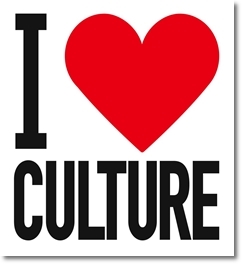To say I’m a FAN of olives and olive oil would be a gross understatement.
Olives and olive oil are part of a Mediterranean diet – and certainly are part of my daily diet. It’s rare if I pass one day here in Spain without eating olives and often have a dish of them with my dinner or lunch or just for an afternoon or evening snack with a can of beer. Being offered a small plate of green olives in bars is always a very welcome free tapa.
Here at home I frequently make pasta or rice dishes and one of the most important ingredients is green olives. For these dishes I’ll buy the small, sealed plastic bags of green manzanilla olives “Sin Hueso” – without pitts. These olives are always from the Seville area.
I also always keep a good supply of canned green olives stuffed with anchovies. What?! ANCHOVIES? That’s disgusting, right?! RIGHT! They were disgusting the first, second, and even third time I tried them. After that, I was hooked. And I don’t even like anchovies! In Spanish, they’re called “Aceitunas Rellenas de Anchoa“. Mmmmm…. SO delicious. And I can’t think of a healthier snack!
Growing up in north central Ohio we usually had cans of California black/ripe olives in the cupboard and jars of green Spanish olives in the refrigerator. The latter were always stuffed with red pimento. Pimento? Yes, it’s a kind of sweet red pepper cut, folded, and stuffed into the olive. But why were they always refrigerated after opening? Like so many food items in the USA, I guess, it carried the labeling, “REFRIGERATE AFTER OPENING”. And like the green olives, the black olives were usually only eaten when added to salads or just on a relish tray for “picking”.
Olive Oil. Now I put olive oil into everything including soup broth, pastas and rices, and use it when frying anything like eggs, meats, and broiling chicken and pork steaks. It’s always applied to salads along with vinegar – the ONLY way make salad dressing in Spain.
We almost never had olive oil back home in Ohio. We always used vegetable oil for cooking and frying eggs and bottles of Thousand Island or Ranch dressing for our salads. I think we started having olive oil in the cupboard when I was in high school but it was used sparingly as it was so expensive.
It was after my first visit to Spain in 1995 when I began taking on a more Mediterranean Diet. And WHAT are the staples of a good Mediterranean Diet? That’s easy. Olives and Olive Oil.
I first started buying olive oil in those little 12 ounce bottles at my local Kroger grocery store in Columbus, Ohio. I remember it was expensive and they only had two brands – and ALL of the brands were of ITALIAN olive oil. The was a default – and still is in the American Olive Oil Market. I guess it doesn’t matter to anyone that 60+% of the “Italian” Olive Oil comes from SPANISH olives and then blended with local olive oil in order to put the “ITALIAN” on the label. THAT’S marketable. Imagine if they put bottles of SPANISH olive oil on the shelf next to the ITALIAN olive oil in your local supermarket. NO ONE would buy the Spanish one. Or would they?? Quick answer is NO. Read on, MacDuff!
It’s my understanding that one of the reasons why the Spanish olive oil industry doesn’t market its olive oil abroad is because of the long-term agreements they have with the Italian olive oil industry. The Italian industry is set throughout the world and, possibly, the Spanish olive oil industry find they make more money in selling directly to the Italians than the possibility/probability of losing money in marketing, unsold olive oil, and the like.
While Italy enjoys a reputation as the bottler of the world’s best olive oils, too few Americans take note of the products’ origins, said Jeffrey Shaw, marketing director of Foods From Spain. “Spain is the No. 1 world producer of olive oil … And Italy is our best customer,”Shaw said. About 60 percent of Spanish olive oil is exported to Italy, and much of it is used by Italian brands, he said. (2004 source)
Since the Italian olive oil was the only and cheapest olive oil available – and STILL very expensive – and because I was using it in greater and greater quantities I started buying the large CANS of olive oil. It was cheaper to buy it in larger containers, maybe $30 per can, and still Italian. I’d always have to ask one of the clerks to take down one of the cans from on top of the display racks because NO ONE bought those. In my last few years before moving to Spain, my local Kroger supermarket started carrying olive oil from Spain and, unfortunately, the local latino market stopped carrying the Spanish olives. Oh well. Soon was I was to be IN Spain anyway.
After a few visits to Spain and as I was in my self-prescribed-process of Spanish-izing myself for my hoped-for move to Spain, I found the local Latino Products supermarket was carrying Spanish Olive Oil AND Spanish Olives – both of the GOYA brand. They were expensive but I was just happy to be able to consume products from Spain. The delicious and popular anchovy-stuffed olives were a whopping $2,99 per can. OUCH! I’d buy 4 at a time and save them for a special evening when I’d have my weekly “Spanish Tapas at Home” dinner which usually consisted of cheese, the olives, a poorly made tortilla de patatas, some chorizo, baguette bread, and Spanish wine. I would even make flan for dessert.
Final thoughts: A number of NON-Europeans choose NOT to use olives or olive oil in their diets because they’re high in fat. That’s totally true. But don’t forget that olives and olive oil has healing properties as well!
The beneficial health effects of olive oil are due to both its high content of monounsaturated fatty acids and its high content of anti-oxidative substances. Studies have shown that olive oil offers protection against heart disease by controlling LDL (“bad”) cholesterol levels while raising HDL (the “good” cholesterol) levels. (1-3) No other naturally produced oil has as large an amount of monounsaturated as olive oil -mainly oleic acid.
Olive oil is very well tolerated by the stomach. In fact, olive oil’s protective function has a beneficial effect on ulcers and gastritis. Olive oil activates the secretion of bile and pancreatic hormones much more naturally than prescribed drugs. Consequently, it lowers the incidence of gallstone formation. (source: HealingDaily.com)
FYI: Right now I’m eating anchovy-stuffed green olives to inspire me for this blog entry. Mmm…
Share THIS on Facebook!






I couldn’t agree with you more MM, even out here in California, finding Spanish olive oil is difficult at best. I still don’t understand why the Spanish have not marketed olives and olive oil in the U.S. as vigorously as the Italians have. Can’t wait to hear the rest of this blog….
My wife and I have traveled through Spain and were served Olives for Tapas. They were a smoky flavored and not salty. We thought they were Anchoa olives but they were not stuffed. We ate them almost every day that we were in Spain. Can you advise me as to where I can get them in the US ?
While I can’t be positive, John, my guess is those olives were of the “Campo Real” variety, “aceitunas de campo real”. They do tend to be less salty and usually have a darker green-ish gray peel. They’re also a common tapa served at many bars throughout Spain. I love them! But there are few Spanish olives – IF ANY! – that I don’t like. As to where to find them, you might look at http://www.tienda.com. Theys sell all kinds of Spanish foods online, including olives! It’s them I use when sending gift baskets.